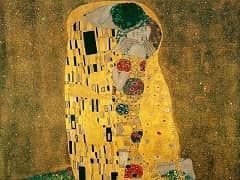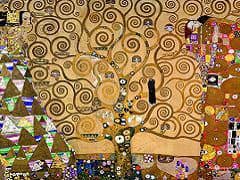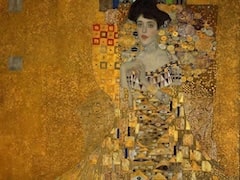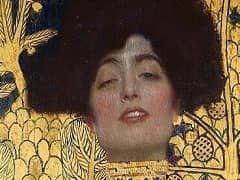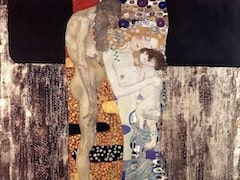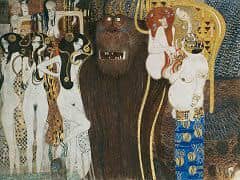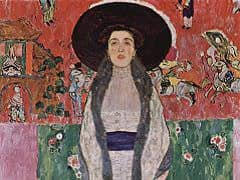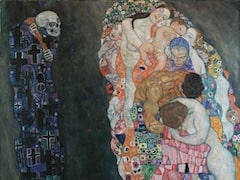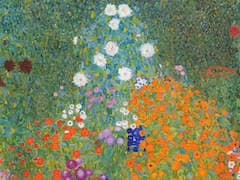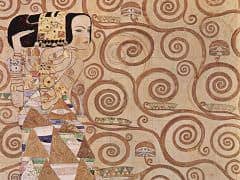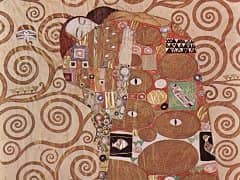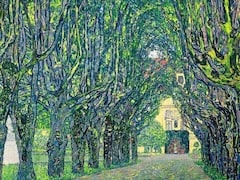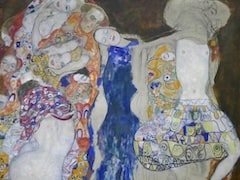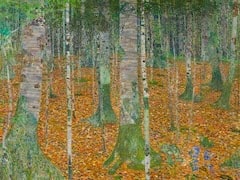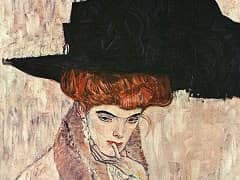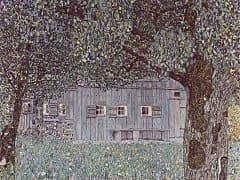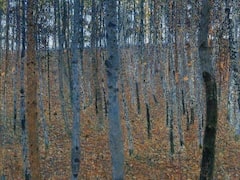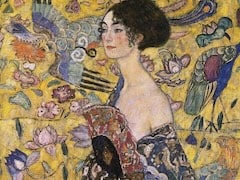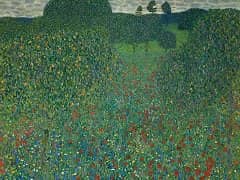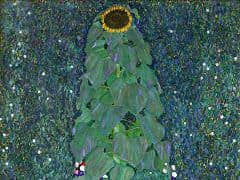Pine Forest, 1902 by Gustav Klimt
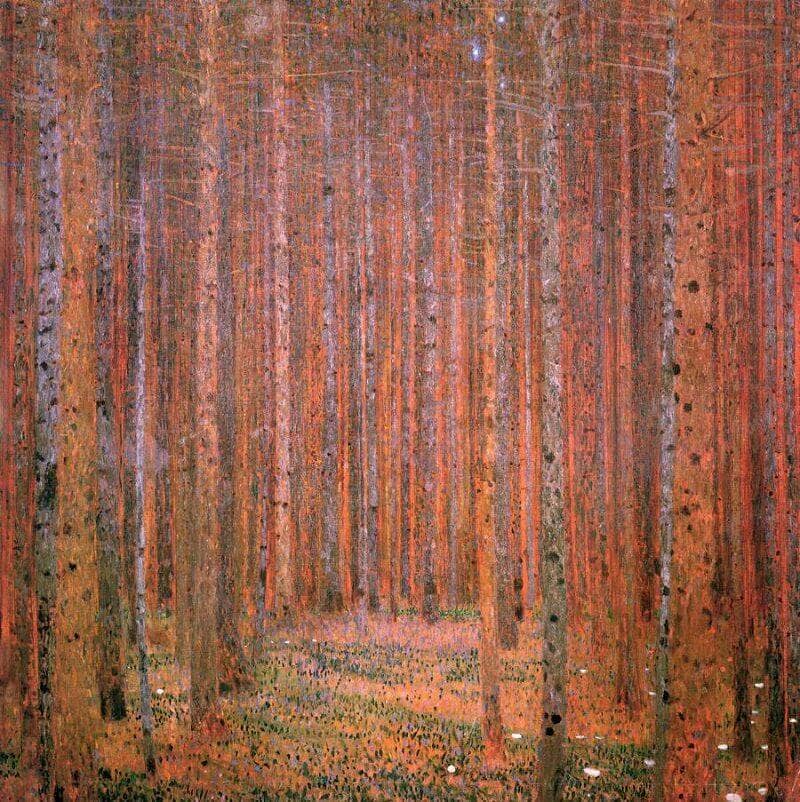
The patterned effects generated by Pointillism continued to inspire Klimt during his Austrian Alps holidays with Emilie Floge. The work is set, like all his landscapes, within a square
composition, believed by mystics and Theosophists to be the symbol of perfected harmony and universal balance. Pine Forest shows the artistpriest at one with nature, communing with the divine
through tranquil meditative contemplation.
The Romantics studied by Klimt were similarly inspired by nature. However, in a rare recorded comment, he also discusses how Post-Impressionist works of Paul Gauguin
influenced him, comparing Gauguin's South Sea Island "life-frieze" works to a musical poem. This work enthralled Klimt during the period he spent recreating Beethoven and Schiller to visual music
in Tlie Beethoven Frieze. Yet, whereas Gauguin's transcendentalism is realized through exotic idealized figures, Klimt's independent universe is the beauty of the surrounding countryside.

